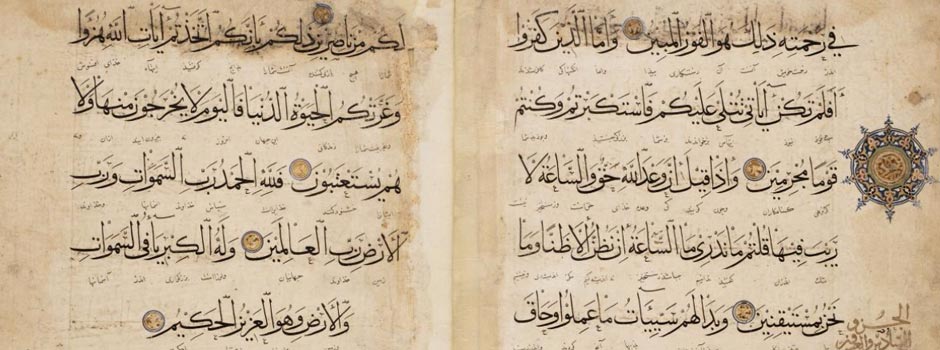
AUCTION AT THE MILLON (Nov 29, 2017) Sale of Oriental Art & Orientalism
Nov 26, 2017 Art Auction
Miss T has, for thirty years, assembled pieces of jewellery from India and Morocco during several auction sales. Amongst others, her precious collection holds splendid Indian pieces, some of which were worn by the Maharani Narinder Kaur, fourth and last spouse of the Kapurtala Maharadja. Icons of the pomp and splendour, the Indian princes and princesses were in love with luxury and were also enlightened aesthetes who used to wear the most sumptuous jewels made with gems of a great purity.
Amongst the many ornaments which sublimed the maharani’s saris, a 19th century Mughal necklace is composed of articulated gold elements and is set with diamond and emerald cabochons, which are the typical stones of the Indian mines. The extremity of the jewel is decorated with fine pearls pendants and the back is enameled according to the 'safed chalwan' technique. Est. 6.000/8.000 EUR.
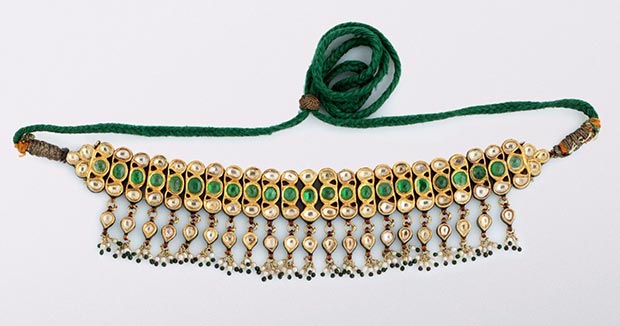 19th century Mughal necklace / Courtesy of Millon
19th century Mughal necklace / Courtesy of Millon
The pair of ear pendants in yellow gold made of three elements is available in the sovereign’s case. Comprised of a rosace they have an almond shape paved with fine pearls and a jadeite pendant in the shape of a water drop. This oriental work of the 50s is estimated 1.200-1.500 EUR.
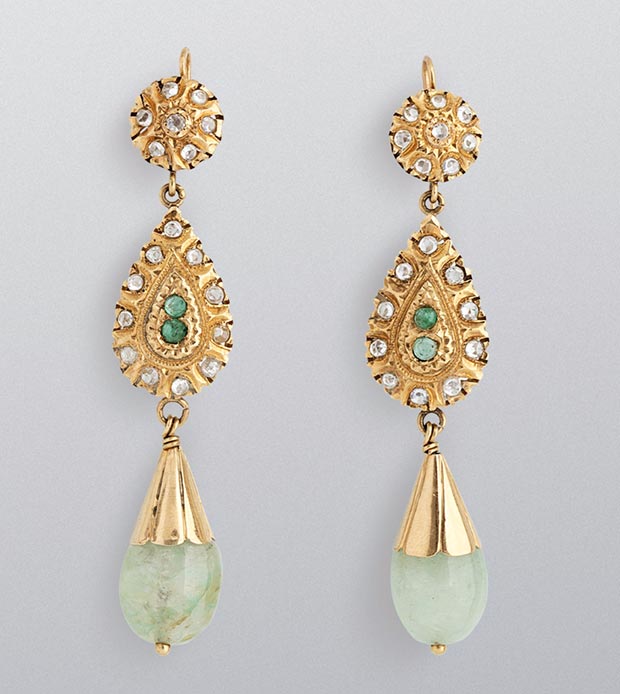 The pair of ear pendants in yellow gold / Courtesy of Millon
The pair of ear pendants in yellow gold / Courtesy of Millon
The most refined accessories also came to perfect the crown heads’ style, such as the green silk bag brooched with golden threads. The Indian jewellery distinguishes itself by its stone setting technique, as it can be seen by looking at the bag’s clasp. Made of gold and silver, it is inlaid with ruby and emerald cabochons according to the 'kundan' technique, a precious knowledge which enables the stone setting without using claws. The peacock décor is paved with diamonds. Created in the 40s in the region of the Rajasthan, this accessory is estimated 6.000/8.000 EUR.
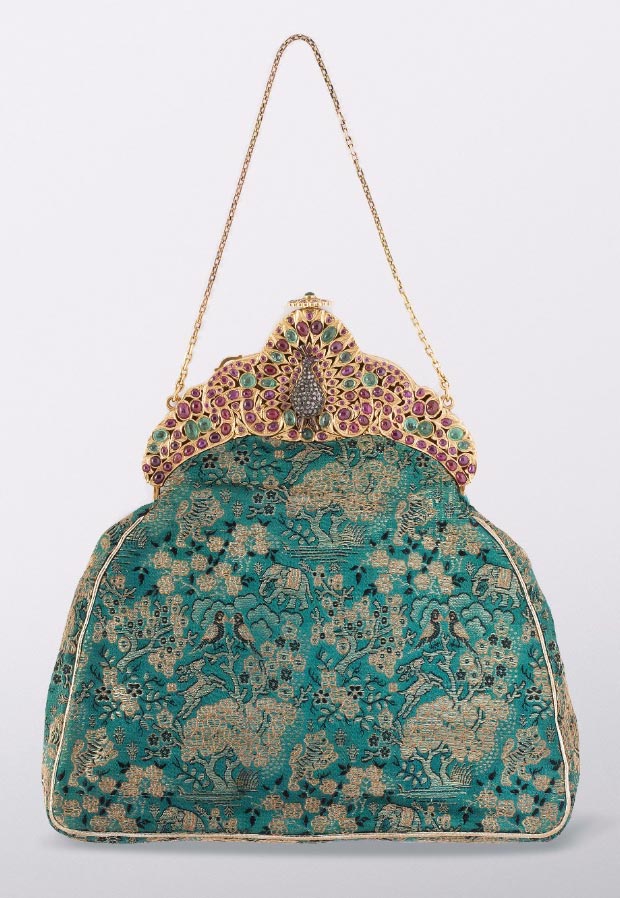 The green silk bag brooched with golden threads / Courtesy of Millon
The green silk bag brooched with golden threads / Courtesy of Millon
The Moroccan goldsmithing will be beautifully represented at the auction, amongst which this rare 'Lebba', a pectoral collar which was worn on the future Moroccan bride’s clothing. Made circa 1800, it is composed of nine pendants which used to cover the owner’s chest. Ten almond shaped hollow pearls alternate with nine pendants richly set with precious stones. Each pendant is made of five elements: a trilobed floret, an important medallion in the shape of a rosace, a smaller oval shaped one, a moon crescent and a drop shaped pendant. This jewel made with gold, diamond, emeralds, rubies and sapphires testifies of the importance of the family which possessed it. It is estimated 40.000-60.000 EUR.
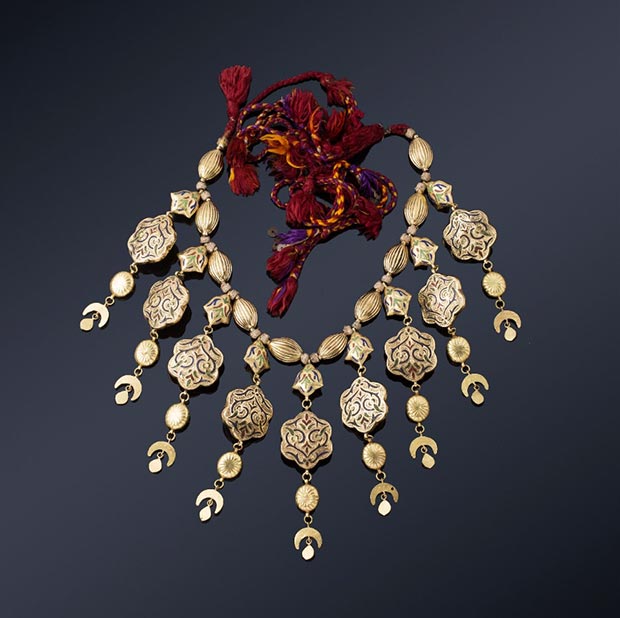 Rare 'Lebba', a pectoral collar which was worn on the future Moroccan bride’s clothing, ca. 1800 / Courtesy of Millon
Rare 'Lebba', a pectoral collar which was worn on the future Moroccan bride’s clothing, ca. 1800 / Courtesy of Millon
The auction will also highlight a pair of ear ornaments of which each loop is linked to a pendant. This pair of 'Khorras Kbach', with a refined chiselled gold decor, is set with emeralds and baroque pearls and is estimated 15.000-18.000 EUR.
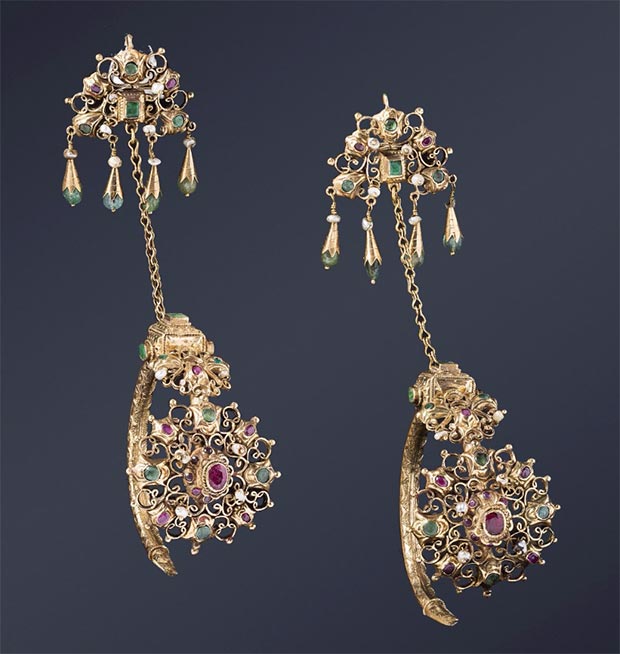 A pair of ear ornaments 'Khorras Kbach', with a refined chiselled gold decor / Courtesy of Millon
A pair of ear ornaments 'Khorras Kbach', with a refined chiselled gold decor / Courtesy of Millon
Another chapter of the auction is a selection of Arabic and Persian manuscripts, calligraphies, tugrahs and miniatures.
An Eastern Kufic Qur'an section, Near East, from 12th century. An Arabic manuscript on paper, containing 110 folios, from the surah Al-Baqara, middle of v.247 to the surah Al-'Arâf, v.26. It is written in black Eastern kufic, with drop shaped verse markers and larger rosette ashr markers, surah headings in yellow, in later gilt stamped Morocco. Est. 35.000-40.000 EUR
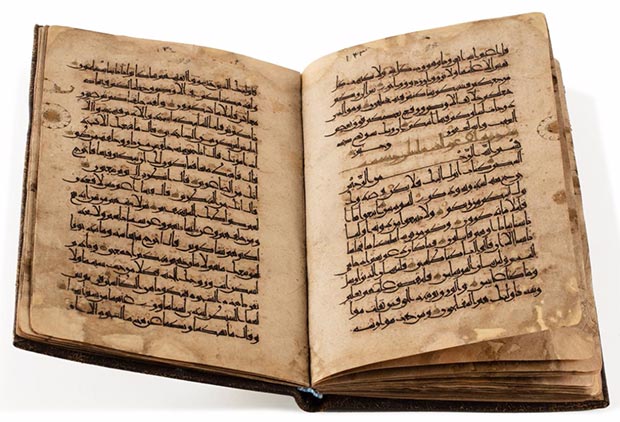 An Eastern Kufic Qur'an section, Near East, 12th century / Courtesy of Millon
An Eastern Kufic Qur'an section, Near East, 12th century / Courtesy of Millon
Large Qajar Qur'an, dated 1285 H., Iran, 1868 AD. An Arabic manuscript containing 346 folios, written in black naskh with 21 lines, with double illuminated front piece, nice lacquered binding. Estimated to 8.000-12.000 EUR.
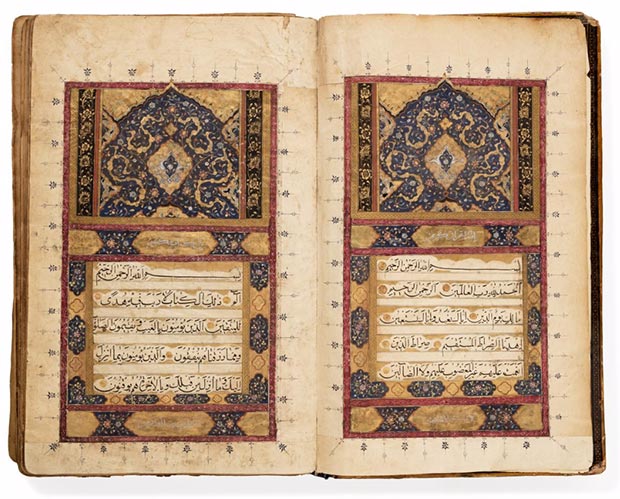 Large Qajar Qur'an, dated 1285 H., Iran, 1868 AD / Courtesy of Millon
Large Qajar Qur'an, dated 1285 H., Iran, 1868 AD / Courtesy of Millon
An Illkhanid Qur'an Section from Iran or Afghanistan. Dating to 14th century, it contains 9 folios, written in black thuluth, on paper, (44:1 until 46:18). The size is 41 x 32 cm. Est. 3.500-4.500 EUR.
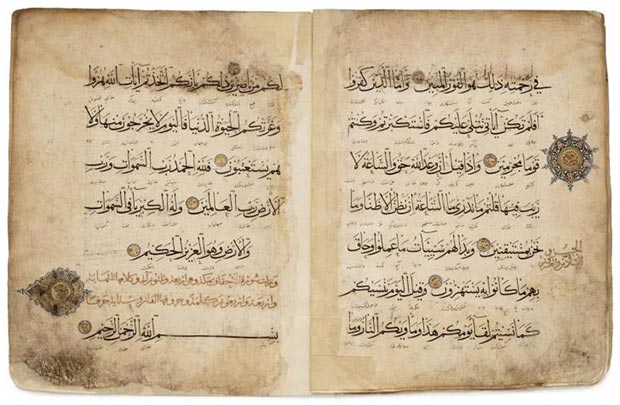 An Illkhanid Qur'an Section from Iran or Afghanistan, 14th century / Courtesy of Millon
An Illkhanid Qur'an Section from Iran or Afghanistan, 14th century / Courtesy of Millon
See all the lots HERE.
Comments
Add a comment